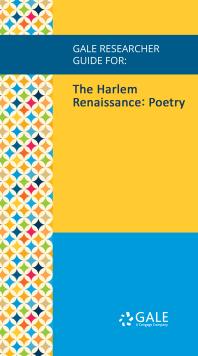Go to the Online Catalog to find books, articles and more at Memorial Library:
Try one of these more specialized databases:
 Encyclopedia of African-American Literature
Encyclopedia of African-American Literature
 Gale Researcher Guide for: the Harlem Renaissance: Poetry
Gale Researcher Guide for: the Harlem Renaissance: Poetry
